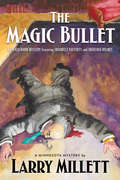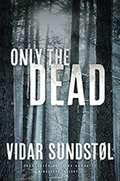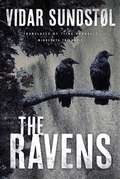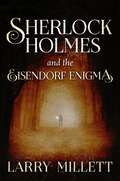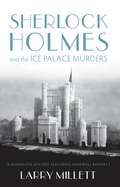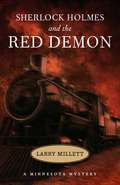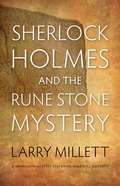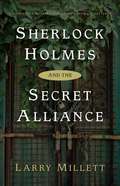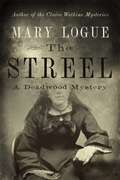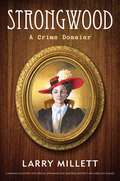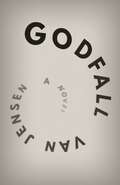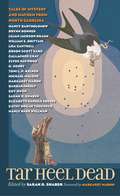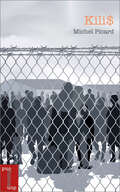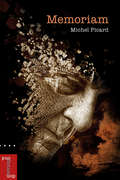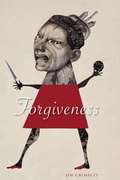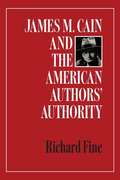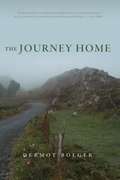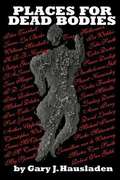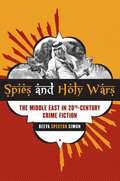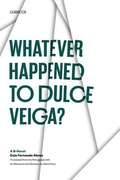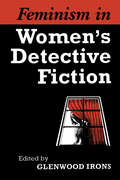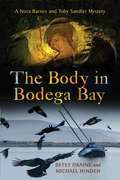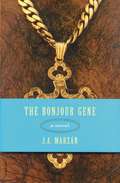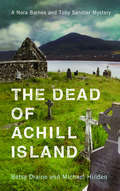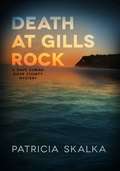- Table View
- List View
The Magic Bullet: A Locked Room Mystery Featuring Shadwell Rafferty and Sherlock Holmes
by Larry MillettSt. Paul, Minnesota. October 1, 1917. High above the city, a renowned local financier named Artemis Dodge lies facedown on the floor of his armored penthouse sanctuary, a single bullet hole in his head. Thirty stories up, in the city&’s tallest building, and not a shred of evidence or sign pointing to anyone having broken into the wealthy man&’s fortress. It is—to all appearances—an impossible crime. Enter Shadwell Rafferty: Irishman, St. Paul saloonkeeper, sometime detective, and old friend of the celebrated sleuth Sherlock Holmes. Summoned by Louis B. Hill—son of railroad magnate James J. Hill—to investigate, Rafferty descends into a world dominated by greedy tycoons and awash in political intrigue and wartime fearmongering. Suspects lurk in every corner of the city—including Dodge&’s beautiful young widow, his slippery assistant, and a shadowy anarchist—and Rafferty pursues them from the streets of Ramsey Hill and the rooms of the Ryan Hotel to the labyrinthine caves under the Schmidt brewery. Matching wits with his foes at the police department and his unsavory rival, the St. Paul detective Mordecai Jones, Rafferty knows that in order to bring a killer to justice he must first unravel the riddle of a single bullet fired in a locked room, three hundred feet above the streets of St. Paul.Set during a bitter streetcar strike and amid the clandestine activities of a ruthless commission charged with enforcing wartime patriotism, Larry Millett has created a classic and perfectly executed locked-room mystery in the great tradition of John Dickson Carr. From locked rooms and civil unrest to murder and wartime paranoia, The Magic Bullet presents Rafferty&’s most challenging case, and its gripping conclusion—with a timely assist from Sherlock Holmes—finds both Rafferty and Millett at the top of their games.
Only the Dead
by Vidar Sundstøl Tiina NunnallyA Norwegian tourist has been found murdered on the shore of Lake Superior--right where an Ojibwe man may have been killed more than one hundred years earlier. Four months later, the official investigation is supposedly over but still not resolved, and U.S. Forest Service officer Lance Hansen, drawn into the mystery by his grisly discovery of the body, is uncovering clues disturbingly close to home. His former father-in-law, Willy Dupree, may hold the key to the century-old murder of Swamper Caribou. And his own brother, Andy, might know more than he's telling--more than he should know--about the recent homicide. The relationship between the brothers takes a dangerous turn as their annual deer hunt becomes a deadly game.Steeped in the rich history of Lake Superior's rugged North Shore, this follow-up to the Riverton Prize-winning The Land of Dreams pursues two tales through a bleak and beautiful landscape haunted by the lives and dreams of its Scandinavian immigrants and Native Americans. Hansen finds himself equally haunted by the complex mysteries that continue to unravel around him.
The Ravens
by Tiina Nunnally Vidar SundstølIt's been a long, dark time since a gruesome discovery drew U.S. Forest Service ranger Lance Hansen into a murder investigation that is now approaching a resolution--although not to his satisfaction. In fact, the mysteries have been multiplying and getting uncomfortably close to home. On the run after a hunting expedition with his brother, Andy, went awry, Lance is haunted by visions of Swamper Caribou, the Ojibwe medicine man whose death a century earlier remains unexplained. Willy Dupree, Lance's former father-in-law, has the ability to interpret dreams--and what he reveals may be key to understanding both deaths, past and present. Reluctantly taking on the role of detective, Lance uncovers troubling connections and grim secrets that will shake him to his very core.In the final installment of his award-winning Minnesota Trilogy, Norwegian crime writer Vidar Sundstøl's affinity for the northern world of Lake Superior is on full display--as Lance's search takes him from the wilds of the Boundary Waters to outposts steeped in voyageur history and Ojibwe culture, from the streets of the Twin Cities to the gritty port of Duluth, to the sleepy tourist towns that dot the North Shore--and as the mysteries of love and nature, history and culture merge in a powerful conclusion.
Sherlock Holmes and the Eisendorf Enigma
by Larry MillettDogged by depression, doubt, and—as a trip to the Mayo Clinic has revealed—emphysema, 66-year-old Sherlock Holmes is preparing to return to England when he receives a shock: a note slipped under his hotel room door, from a vicious murderer he’d nearly captured in Munich in 1892. The murderer, known as the Monster of Munich, announces that he has relocated to Eisendorf, a tiny village near the Mayo Clinic in Rochester, Minnesota.If Holmes is not what he once was, the same can be said for Eisendorf: once a thriving community founded by German idealists but now a dying town with only forty residents—two of whom have, indeed, died recently under highly mysterious circumstances. Replete with all the gothic richness of Larry Millett’s earlier Holmes novels, Sherlock Holmes and the Eisendorf Enigma links events in 1892 Germany with those in small-town Minnesota in 1920 in a double mystery that tests the aging detective’s mettle—and the reader’s nerve—as never before. Guided by Eisendorf’s peculiar archivist and taunted by the Monster, Holmes finds himself drawn into the town’s dark history of violence and secrecy, and into the strange tunnels that underscore the old flour mill where answers, and grievous danger, lie in wait. No longer the cool, flawless logician of times past, Holmes must nonetheless match wits with a fiendish opponent who taunts him right up to a final, explosive confrontation.
Sherlock Holmes and the Ice Palace Murders
by Larry MillettThe year is 1896, and St. Paul's magnificent Winter Carnival is under way when Holmes and Watson are summoned by the city's most powerful man, railroad magnate James J. Hill. A wealthy young man disappears on the eve of his wedding--and his fiancée suspiciously discards her wedding dress. After a grisly discovery in the carnival's Ice Palace leads to a flurry of clues, Holmes is on the case. His pursuit of the murderer takes him through the highest echelons of St. Paul society and into cahoots with Shadwell Rafferty, a gregarious saloonkeeper and part-time private investigator. Soon Holmes, Watson, and Rafferty are embroiled in a perilous adventure that takes them from one frozen corner of the city to another and out onto the treacherous ice of the Mississippi River as they trail a cruel and ruthless killer.
Sherlock Holmes and the Red Demon
by Larry MillettIn the summer of 1994, a workman at the historic mansion of railroad baron James J. Hill in St. Paul, Minnesota, stumbles on a long-hidden wall safe. When experts arrive to open the safe and examine its contents, they make an astonishing discovery. There, inside, is a handwritten manuscript bearing the signature of John H. Watson, M.D.The manuscript contains the story of how Sherlock Holmes and Watson traveled to Minnesota to track a murderous arsonist--known only as the Red Demon--who is threatening both Hill and his Great Northern Railway. Set against the backdrop of the real, devastating Hinckley forest fire of 1894, Sherlock Holmes and the Red Demon is the tense and atmospheric first novel in Larry Millett's classic series of adventures that brought Sherlock Holmes and Dr. Watson to Minnesota.
Sherlock Holmes and the Rune Stone Mystery
by Larry MillettSherlock Holmes is bored between cases at 221B Baker Street. So when King Oskar II of Sweden--who has heard of the discovery of the Kensington Rune Stone by a farmer in Minnesota--asks to engage his services, Holmes jumps at the chance to decipher the runes and determine whether the find is real or a hoax. With Dr. John H. Watson by his side, faithfully recording every detail, Holmes makes his way to Minnesota for a third time. But, in the first of many strange and unfortunate coincidences, the farmer who found the mysterious stone is murdered, and the stone itself is stolen on the day the famous detective arrives.With the help of one Shadwell Rafferty, now a friend and partner, Holmes must solve this baffling case to find both the stone and the murderer.
Sherlock Holmes and the Secret Alliance
by Larry MillettAs the city of Minneapolis prepares for a visit from President William McKinley, someone else prepares for murder. On the day before the visit, a union activist is found hanged, naked, outside a ruined mansion. A placard around his neck reads "THE SECRET ALLIANCE HAS SPOKEN." Who is the alliance? What does it want? How was the victim involved with the city's corrupt mayor? And why did he possess a photograph of a prominent citizen in a compromising position? Shadwell Rafferty searches for answers, encountering bribery, corruption, union organizers, anarchists, and conspiracy, putting himself in danger. But as luck would have it, his old friends Sherlock Holmes and Dr. John H. Watson are on their way. In this fourth installment of Larry Millett's Minnesota Mystery series, Shadwell Rafferty commands center stage in a brand-new city. Packed with Millett's signature historical and architectural detail, this book is deviously delightful.
The Streel: A Deadwood Mystery
by Mary LogueFrom &“the reigning royalty of Minnesota murder mysteries&” (The Rake) comes a striking new heroine: a young Irish immigrant caught up in a deadly plot in nineteenth-century DeadwoodWhen I was fifteen and my brother Seamus sixteen, we attended our own wake. Our family was in mourning, forced to send us off to America.The year is 1880, and of all the places Brigid Reardon and her brother might have dreamed of when escaping Ireland&’s potato famine by moving to America, Deadwood, South Dakota, was not one of them. But Deadwood, in the grip of gold fever, is where Seamus lands and where Brigid joins him after eluding the unwanted attentions of the son of her rich employer in St. Paul—or so she hopes. But the morning after her arrival, a grisly tragedy occurs; Seamus, suspected of the crime, flees, and Brigid is left to clear his name and to manage his mining claim, which suddenly looks more valuable and complicated than he and his partners supposed.Mary Logue, author of the popular Claire Watkins mysteries, brings her signature brio and nerve to this story of a young Irish woman turned reluctant sleuth as she tries to make her way in a strange and often dangerous new world. From the famine-stricken city of Galway to the bustling New York harbor, to the mansions of Summit Avenue in St. Paul, and finally to the raucous hustle of boomtown Deadwood, Logue&’s new thriller conjures the romance and the perils, and the tricky everyday realities, of a young immigrant surviving by her wits and grace in nineteenth-century America.
Strongwood: A Crime Dossier
by Larry MillettThe place is Minneapolis, the year is 1903, and Michael Masterson has fallen in love, or so he claims, with Addie Strongwood, a beautiful working-class girl with an interesting past and a mind of her own. But their promising relationship quickly begins to disintegrate before reaching a violent conclusion. Amid allegations of seduction, rape, and blackmail, Michael is shot dead and Addie goes on trial for first-degree murder. As the case unfolds in a welter of conflicting evidence and surprise discoveries, a jury must decide whether Addie acted in self-defense or killed her one-time lover with the coldest of calculation.Reconstructing the case through trial testimony, newspaper stories, the journal of Addie's flamboyant defense attorney, and her own first-person account as serialized in the Minneapolis Tribune, Larry Millett builds a suspenseful tale of love, money, betrayal, and death. Sherlock Holmes and Shadwell Rafferty, long known to readers from Millett's previous mysteries, play crucial roles in the unraveling of the case, which also offers a glimpse into the sharply divided worlds of the rich and the poor at the dawn of the twentieth century.
Godfall (Flyover Fiction)
by Van JensenWhen a massive asteroid hurtles toward Earth, humanity braces for annihilation—but the end doesn&’t come. In fact, it isn&’t an asteroid but a three-mile-tall alien that drops down, seemingly dead, outside Little Springs, Nebraska. Dubbed &“the giant,&” its arrival transforms the red-state farm town into a top-secret government research site and major metropolitan area, flooded with soldiers, scientists, bureaucrats, spies, criminals, conspiracy theorists—and a murderer. As the sheriff of Little Springs, David Blunt thought he&’d be keeping the peace among the same people he&’d known all his life, not breaking up chanting crowds of conspiracy theorists in tiger masks or struggling to control a town hall meeting about the construction of a mosque. As a series of brutal, bizarre murders strikes close to home, Blunt throws himself into the hunt for a killer who seems connected to the Giant. With bodies piling up and tensions in Little Springs mounting, he realizes that in order to find the answers he needs, he must first reconcile his old worldview with the town he now lives in—before it&’s too late.
Tar Heel Dead
by Sarah R. ShaberFrom O. Henry to Lilian Jackson Braun, North Carolina has nurtured some of the world's best-known mystery writers. This unique collection of mystery short stories showcases some of North Carolina's best writing talent from the past and the present--some famous, some less well known. Some of the mysteries are by authors who have earned solid reputations in other genres, such as Orson Scott Card and William Brittain, but as their stories here demonstrate, their talent embraces the mysterious. The stories in this collection are as diverse as the "detectives" they feature: the Native American policeman who solves his first case on the reservation; a Siamese cat with an intuitive affection for his paraplegic neighbor; an attentive convenience store owner; and a thirty-year-old computer whiz whose body stopped growing when he was nine. They solve crimes, locate treasures, and uncover deceit in a range of tales that reflects the breadth of the genre. With stories to delight mystery devotees and fans of all good writing, this anthology highlights one of the most vibrant and popular elements of North Carolina's literary legacy. Contributors:Nancy Bartholomew, Greensboro, N.C.Lilian Jackson Braun, Tryon, N.C.William E. Brittain, Asheville, N.C.Lisa Cantrell, Madison, N.C.Orson Scott Card, Greensboro, N.C.O. Henry (1862-1910)Toni L. P. Kelner, Malden, Mass. Michael Malone, Hillsborough, N.C.Margaret Maron, Willow Springs, N.C.Katy Munger, writing as Gallagher Gray, Durham, N.C.BarbaraNeely, Jamaica Plain, Mass.Guy Owen (1925-1981)David B. Sentelle, writing as Clyde Haywood, Washington, D.C.Sarah R. Shaber, Raleigh, N.C.Elizabeth Daniels Squire (1926-2001)Kathy Hogan Trocheck, Raleigh, N.C.Manly Wade Wellman (1903-1986)Brenda Witchger, writing as Brynn Bonner, Cary, N.C.
Kilis (Essais et fiction)
by Michel PicardTchétchène d’origine russe et ancien trafiquant d’armes repenti, Ivan Gouchenko est abattu à son domicile. Le meurtre de ce PDG d’une division turque de la société Apobiotech Pharma, une transaction de 40 millions de dollars, des allégations de blanchiment de fonds et le vol d’un virus prennent une dimension internationale. Pour percer le mystère, Fisher, directeur des opérations canadiennes chez Neuro-Alpha, demande au docteur Derren d’accéder à la mémoire d’un homme : Jalel Al-Hariz, un des terroristes les plus recherchés. Une mission de routine pour un analyste aux renseignements criminels. Une mission des plus palpitantes pour un neurologue. Sauf que la belle-fille du trafiquant repenti se trouve au coeur de l’affaire. Et que l’ancienne flamme de Fisher est à son tour accusée de fraude. Après Memoriam, on retrouve avec bonheur le tandem Fisher-Derren qui n’a de cesse de dénouer cet imbroglio de Kilis à Montréal, de la détresse d’un camp de réfugiés au laboratoire aseptisé de Bio Pharma. Et cela, quitte à défricher les mémoires les plus violentes, quitte à voler des souvenirs par effraction.
Memoriam: À La Mémoire De La Liberté (Essais et fiction)
by Michel PicardPhilippe, jeune neurologue, consacre sa carrière à la maladie d’Alzheimer. Sa seule motivation : prouver l’innocence de son père, atteint d’Alzheimer, d’allégations de complot terroriste, qui a coûté la vie à sa mère. Son acharnement l’amène à transgresser certaines limites au grand désespoir de sa sœur aînée, qui cache aussi un important secret. Les avancées lentes et difficiles du chercheur prennent une tournure inédite à la rencontre du directeur d’une entreprise spécialisée en neuroscience. Encouragé par l’apport de la société, dont l’ajout d’un patient quelque peu mystérieux, Philippe fait finalement les percées qu’il espérait. Nonobstant, Philippe pousse encore plus ses techniques de recherche sur la mémoire et pour protéger la vie, déjà fragile, de son père. Réussira-t-il à trouver le véritable terroriste dont l’identité se cache quelque part dans les ténèbres cérébrales de ses deux patients ? Publié en français.
Forgiveness
by Jim Grimsley"The Lifetime movie of my divorce and crime spree will be entitled Breakdown at Midnight. . . . Sympathy for my character will be established by my loss of a wildly respectable, lucrative job with Arthur Andersen, a company which turned out to be as crooked as its customers. I will be another orphan of the American Dream gone sour, and eventually I will give in to the so-called dark side of my nature when I strangle Carmine with the strap of her Prada bag, or stab her to death with a survivalist-quality knife, or bludgeon her skull to a bloody pulp with a classic Tiffany lamp; this part of the script will have to wait for the real event to unfold since, though I've decided that tomorrow will be the day I kill her, I have yet to choose how. "--Charley StrangerTurning headline news into biting social satire, Jim Grimsley exposes the amorality of materialistic America in Forgiveness, a blackly comic tale of a bankrupt accounting executive who dreams of achieving stardom in the only way a pathetic failure can--by murdering his wife. As Charley Stranger imagines the crime, he fantasizes wildly unlikely encounters with celebrities--sharing marital woes with Nicole Kidman over a latte at Starbucks, being interviewed by Barbara Walters--while in real life his wife Carmine incessantly ridicules his inability to perform either in bed or in the marketplace. As Forgiveness veers to its shocking conclusion, it strips bare the corruption of the American Dream--the moral bankruptcy of corporate and political institutions, the hollowness of living in a media-saturated world, the delusion of buying love with luxury goods.
James M. Cain and the American Authors' Authority
by Richard FineThe 1940s offered ever-increasing outlets for writers in book publishing, magazines, radio, film, and the nascent television industry, but the standard rights arrangements often prevented writers from collecting a fair share of the profits made from their work. To remedy this situation, novelist and screenwriter James M. Cain (The Postman Always Rings Twice, Double Indemnity, Mildred Pierce) proposed that all professional writers, including novelists, playwrights, poets, and screenwriters, should organize into a single cartel that would secure a fairer return on their work from publishers and producers. This organization, conceived and rejected within one turbulent year (1946), was the American Authors' Authority (AAA). In this groundbreaking work, Richard Fine traces the history of the AAA within the cultural context of the 1940s. After discussing the profession of authorship as it had developed in England and the United States, Fine describes how the AAA, which was to be a central copyright repository, was designed to improve the bargaining position of writers in the literary marketplace, keep track of all rights and royalty arrangements, protect writers' interests in the courts, and lobby for more favorable copyright and tax legislation. Although simple enough in its design, the AAA proposal ignited a firestorm of controversy, and a major part of Fine's study explores its impact in literary and political circles. Among writers, the AAA exacerbated a split between East and West Coast writers, who disagreed over whether writing should be treated as a money-making business or as an artistic (and poorly paid) calling. Among politicians, a move to unite all writers into a single organization smacked of communism and sowed seeds of distrust that later flowered in the Hollywood blacklists of the McCarthy era. Drawing insights from the fields of American studies, literature, and Cold War history, Fine's book offers a comprehensive picture of the development of the modern American literary marketplace from the professional writer's perspective. It uncovers the effect of national politics on the affairs of writers, thus illuminating the cultural context in which literature is produced and the institutional forces that affect its production.
The Journey Home
by Dermot BolgerYoung Francis Hanrahan dreams desperately of a life different from that of his country-born, suburban-living parents. On his first day at his first job Francis makes his first real friend. Shay, a would-be older brother, introduces "Hano" to Dublin's appealingly seedy after-hours bars and drug-fueled parties. They are joined by Cait, a troubled teenager who spends her days in a stupor. But the noir thrills of underground Dublin cannot conceal the unemployment, corruption, and violence strangling the city. The Plunkett brothers, masters of "the subtle everyday corruption on which a dynasty was built" will use the friends-with tragic results. Torn between his friends, his family, and his own ideals, Hano ultimately falls victim to these powerful forces and commits a heinous crime. He flees through the countryside with Cait, wondering, as he narrates the events that set him on this path, if there is a home at the end of it. Controversial for its gritty portrait of Dublin in the 1980s, The Journey Home is Dermot Bolger's unflinching look at the personal cost of social progress, and those, innocent or not, lost during the journey.
Places for Dead Bodies
by Gary HausladenFrom Tony Hillerman's Navajo Southwest to Martin Cruz Smith's Moscow, an exotic, vividly described locale is one of the great pleasures of many murder mysteries. Indeed, the sense of place, no less than the compelling character of the detective, is often what keeps authors writing and readers reading a particular series of mystery novels. <P><P> This book investigates how "police procedural" murder mysteries have been used to convey a sense of place. Gary Hausladen delves into the work of more than thirty authors, including Tony Hillerman, Martin Cruz Smith, James Lee Burke, David Lindsey, P. D. James, and many others. Arranging the authors by their region of choice, he discusses police procedurals set in America, the United Kingdom and Ireland, Europe, Moscow, Asia, and selected locales in other parts of the world, as well as in historical places ranging from the Roman Empire to turn-of-the-century Cairo.
Spies and Holy Wars: The Middle East in 20th-Century Crime Fiction
by Simon Reeva SpectorIlluminating a powerful intersection between popular culture and global politics, Spies and Holy Wars draws on a sampling of more than eight hundred British and American thrillers that are propelled by the theme of jihad--an Islamic holy war or crusade against the West. Published over the past century, the books in this expansive study encompass spy novels and crime fiction, illustrating new connections between these genres and Western imperialism. Demonstrating the social implications of the popularity of such books, Reeva Spector Simon covers how the Middle Eastern villain evolved from being the malleable victim before World War II to the international, techno-savvy figure in today's crime novels. She explores the impact of James Bond, pulp fiction, and comic books and also analyzes the ways in which world events shaped the genre, particularly in recent years. Worldwide terrorism and economic domination prevail as the most common sources of narrative tension in these works, while military "tech novels" restored the prestige of the American hero in the wake of post-Vietnam skepticism. Moving beyond stereotypes, Simon examines the relationships between publishing trends, political trends and popular culture at large--giving voice to the previously unexamined truths that emerge from these provocative page-turners.
Whatever Happened to Dulce Veiga?
by Caio Fernando AbreuA forty-year-old Brazilian journalist reduced to living in a dilapidated building inhabited by a bizarre human fauna—fortune-tellers, transvestites, tango-loving Argentinean hustlers—is called upon to track down and write the story of Dulce Veiga, a famous singer who disappeared twenty years earlier on the eve of her first big show. Thus begins a mad race through an underground, nocturnal São Paulo among rock bands with eccentric names, feline reincarnations of Vita Sackville-West, ex-revolutionaries turned junkies, gay Pietas, echoes of Afro-Brazilian religions, and intimations of AIDS . . . Constructed like a mystery, the novel unravels over a week, evoking a decadent and contaminated atmosphere in which the journalist’s own search for meaning finds its expression in the elusive Dulce Veiga, who constantly appears to him as if in a dream, her arm pointing heavenward. Whatever Happened to Dulce Veiga? is a descent into the underworld of contemporary megalopolises where, like the inside of a huge TV, life intermingles with bits of music, film clips, and soap opera characters in a crazy and macabre dance, moving toward a possible catharsis.
Feminism in Women's Detective Fiction
by Glenwood IronsNames such as Sherlock Holmes, Hercule Poirot, and Sam Spade are perhaps better known than the names of the authors who created them. The woman detective has also had worldwide appeal; yet, with the exception of Christie's Miss Marple, the names of female detectives and their authors have only recently gained wide attention through the popularity of Marcia Muller, Sue Grafton, and Sara Paretsky.The essays in this collection grapple with a wide range of issues important to the female sleuth - the most important, perhaps, being the oft-heard challenge to her suitability for the job. Not surprisingly, gender issues are the main focus of all the essays; indeed, in detective novels with a woman protagonist, these issues are often right at the surface.Some of the papers see the female sleuth as an important force in popular fiction, but many also challenge the notion that the woman detective is a positive model for feminists. They argue that fictional female sleuths have lost the `otherness' that a feminine approach to the genre should encourage. Collectively, the essays also reveal the differences between British and American perspectives on the woman detective.
The Body in Bodega Bay
by Betsy Draine Michael HindenLife in Bodega Bay on the rugged, foggy coast of northern California has been pretty quiet since Alfred Hitchcock filmed "The Birds "there. But antiques dealer Toby Sandler learns that his new business partner Charlie has been found dead on an abandoned boat in the harbor. When the local sheriff discovers that Charlie's newly acquired Hitchcock artifacts and a painting of an angel are missing, he enlists Toby and his wife, Nora Barnes, an art historian, in the investigation. Local tales about Hitchcock's famous film, and some digging into the region's past as a Russian outpost, provide Toby and Nora with clues to the existence of a lost masterpiece. Convinced that this forgotten work may hold the key to the murder, Nora and Toby set out to find it. When Nora's trouble-prone sister Angie arrives, events take a surprising turn, leading to the uncanny realm of angel reading and putting Nora and her family in danger. As Nora and Toby investigate matters both criminal and otherworldly, Nora realizes that some mysteries in life may be too deep to solve. "
The Bonjour Gene
by J. A. MarzánApproaching midlife, after rising to comfortable suburban life, Edgar Bonjour becomes involved with a drug-trafficking Puerto Rican motorcycle gang from his old neighborhood and is brought down by an affair with a woman in the gang. News of his murder leads to introspection among other members of the Puerto Rican Bonjour clan, all descended from three now nameless French brothers remembered only by their surname. Though extended generations of the Bonjours dispersed, some settling in New York, they remain connected by the shared lore of their ancestry, that starting with the three original Bonjour brothers—all rampant adulterers—every descendent Bonjour male carries a reckless, womanizing gene. Interconnected like the Bonjour family itself, this novel is a tale of unpredictable and unforgettable characters that transports readers to a plane where ethnicity becomes universality.
The Dead of Achill Island (A Nora Barnes and Toby Sandler Mystery)
by Betsy Draine Michael HindenArt historian Nora Barnes and her husband, Toby Sandler, are visiting West Ireland for a family reunion. During a morning walk through a deserted village on Achill Island, Nora stumbles upon a body—her notorious uncle Bert. When a clue singles out her mother as the likely suspect, Nora and Toby are on the case to clear her name. Whether in a barroom brawl or the sauna of a swingers’ club, Toby has Nora’s back. As they search, the dead of Achill seem to speak from graveyards, ruined churches, and megalithic tombs. A second murder makes it all the more difficult to connect the dots. And when Nora and Toby become the next targets, their own survival is at stake.
Death at Gills Rock
by Patricia SkalkaAfter tracking a clever killer in Death Stalks Door County, park ranger and former Chicago homicide detective Dave Cubiak is elected Door County sheriff. His newest challenge arrives as spring brings not new life but tragic death to the isolated fishing village of Gills Rock. Three prominent World War II veterans who are about to be honored for their military heroics die from carbon monoxide poisoning during a weekly card game. Blame falls to a faulty heater but Cubiak puzzles over details. When one of the widows receives a message claiming the men "got what they deserved,” he realizes that there may be more to the deaths than a simple accident. Investigating, Cubiak discovers that the men’s veneer of success and respectability hides a trail of lies and betrayal that stems from a single, desperate act of treachery and eventually spreads a web of deceit across the peninsula. In a dark, moody tale that spans more than half a century, Cubiak encounters a host of suspects with motives for murder. Amid broken dreams, corruption, and loss, he sorts out the truth. Death at Gills Rock is the second book in Patricia Skalka’s Dave Cubiak Door County Mystery series.
